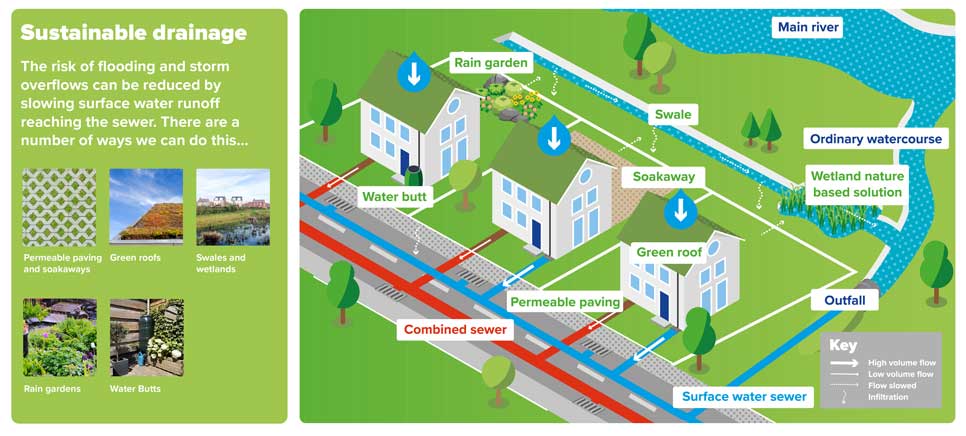Clean Rivers and Seas Task Force
How we're reducing the use of storm overflows and preventing flooding across our region.
Clean Rivers and Seas Task Force
We know that, to reduce storm overflow releases, we must find new and innovative solutions to deliver infrastructure that's more resilient and adaptable.
That's why we set up a Clean Rivers and Seas Task Force in November 2021, demonstrating our commitment to drive down the use of storm overflows – and the team has ambitious targets to meet.
The Task Force is responsible for delivering six pathfinder projects over the next two years, as well as delivering a regional plan to reduce storm overflows between now and 2030.
To achieve these targets, the Task Force is establishing strong partnerships across our region (See our how can I get involved page to find out more).
Find out what the task force has been up to
Below you’ll find updates on the task force’s activities. We publish updates approximately every six months.
- Clean Rivers and Seas Task Force – Bi-annual Update May 2022
- Clean Rivers and Seas Task Force Update January 2023
- Pathfinder Update April 2023
- Clean Rivers and Seas Task Force Update November 2023
How do we reduce the use of storm overflows?
There are broadly three main ways to reduce storm overflows:
- Source control – prevent, or slow the flow of, water entering sewers. For example, using sustainable drainage solutions (SuDs)
- Make better use of existing infrastructure – for example, using smart controls on our storage tanks and pumps and/or collaborating on solutions with highway drainage networks
- Build bigger infrastructure – bigger pipes, storage tanks, pumps and treatment facilities
We believe building bigger infrastructure should only be implemented when solutions relating to source control and making better use of existing infrastructure, have been exhausted. Preventing water from entering the combined sewer system during heavy rainfall, is the most sustainable and cost-effective way to reduce storm overflows. There are a variety of nature-based solutions to achieve this, such as ponds, wetlands, soakaways, and rain gardens.

Groundwater infiltration
We also have a plan to manage groundwater infiltration into our wastewater systems. Find out more about our Infiltration Reduction Plan.